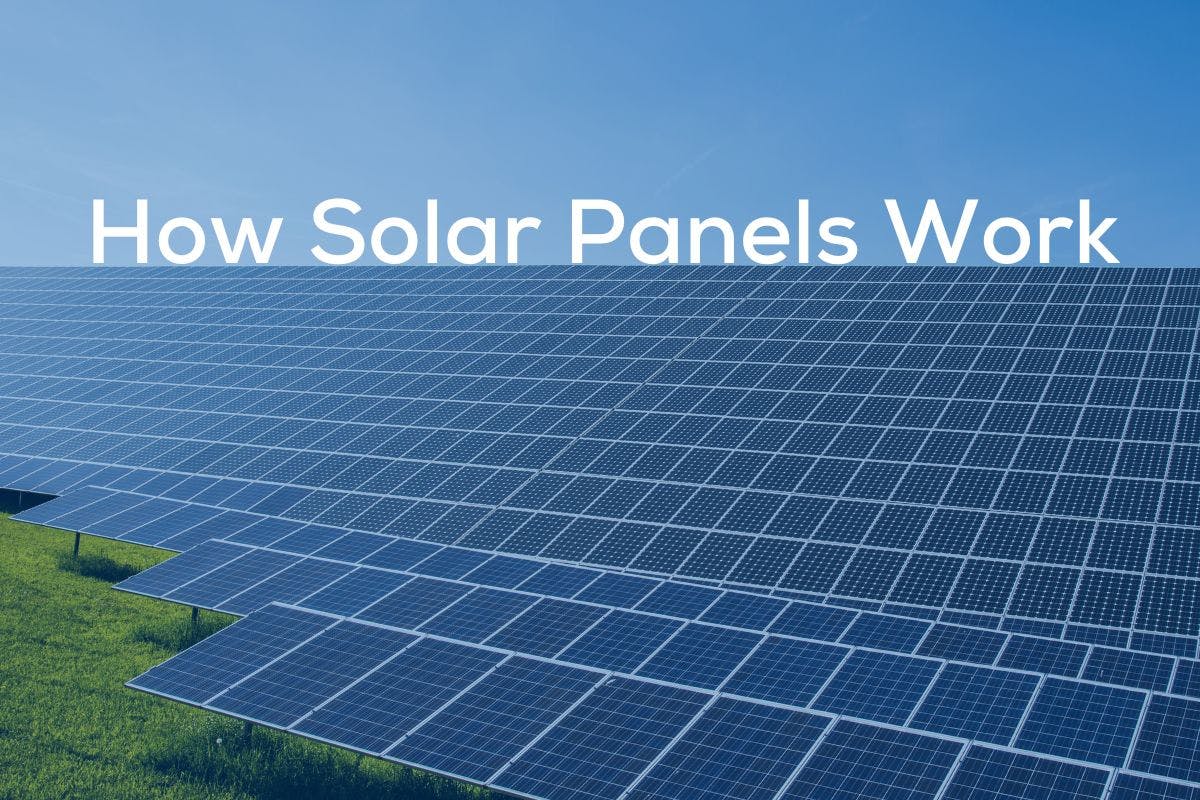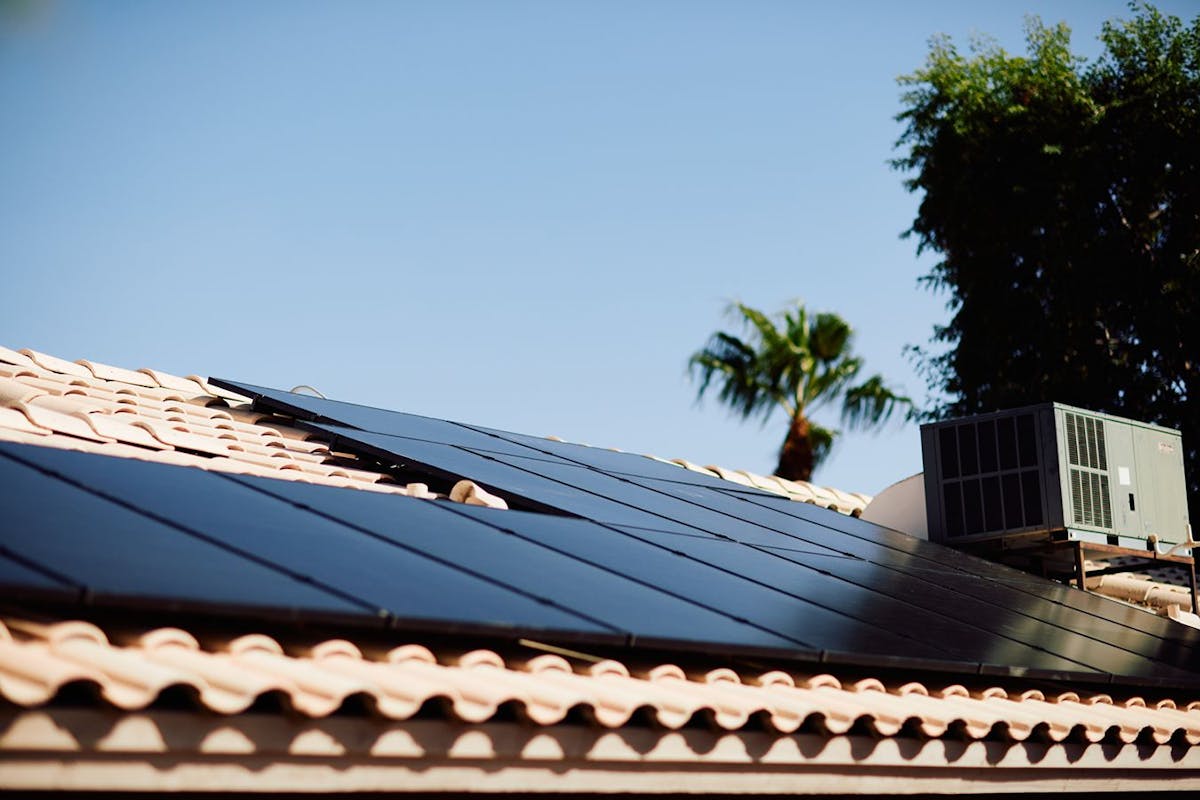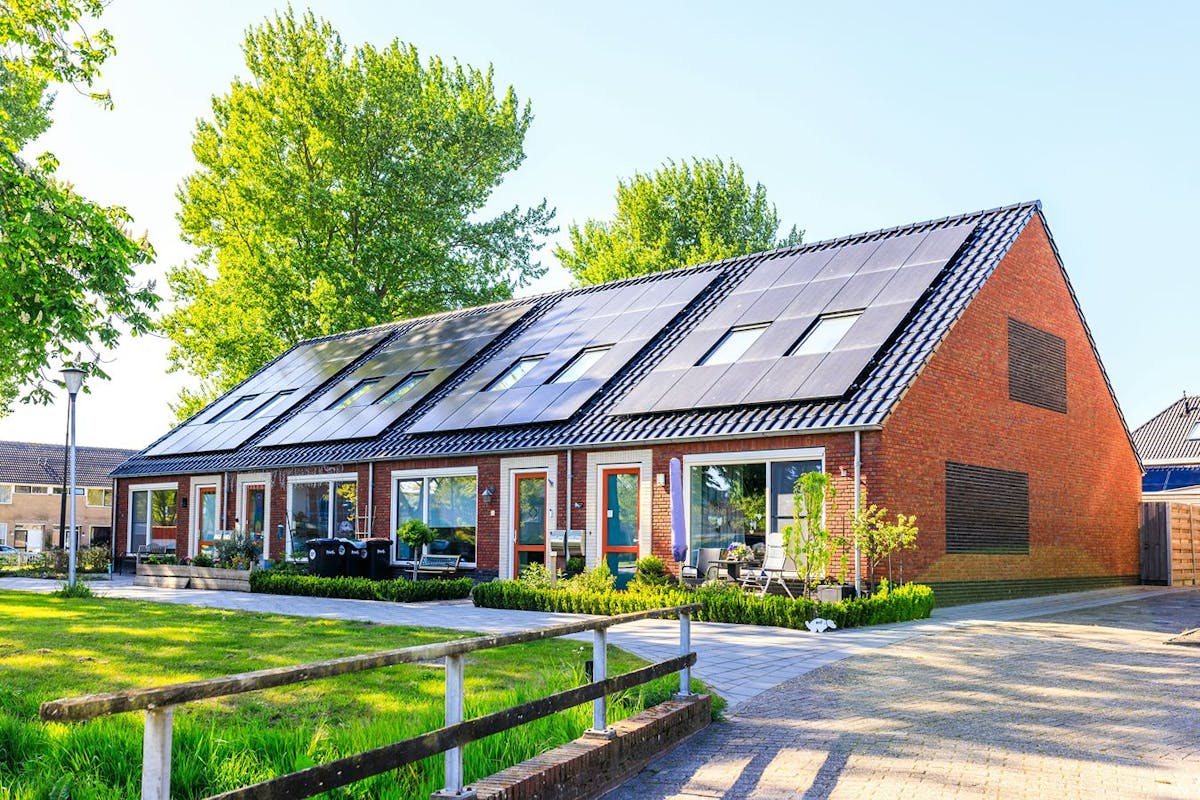How Do Solar Panels Work? A Guide to Powering Your Home
Last edited

Author
Andrew Giermak
Solar and Electrification Writer and Editor

Editor
Andrew Blok
Electrification and Solar Writer and Editor

Solar power is incredibly clean, naturally renewable, and virtually infinite. But, how do solar panels turn that energy from sunlight into electricity you can use inside your home? What are they made of and what do they do at night? What happens if they get dirty? If you have these questions or others, don’t worry. We have answers.
Here’s everything you need to know about how residential solar panels work and the affordable, clean power they generate.
See how much you can save by going solar with Palmetto
How Solar Panels Generate Electricity
Solar panels are made of silicon, just like beach sand. When sunlight interacts with the silicon cells in solar panels, electrons are set into motion, initiating the flow of electric current through a process known as the photovoltaic (PV) effect. Solar panels generate direct current (DC) electricity, and an inverter converts that energy into alternating current (AC) electricity that can be used in your home.
Silicon is a semiconductive material, which means it functions as an insulator under most conditions but can function as a conductor when enough energy is introduced. This semiconductive property allows it to absorb the sun’s energy and convert it into electricity.
To answer, “How do solar panels generate electricity?” you have to understand the differences between a solar cell, a solar panel, and a solar array.
A typical solar cell is made up of layers of silicon. Solar cells are combined into solar panels by putting them on a backing sheet with a protective glass layer on top, which is then surrounded by a metal frame, with wiring running throughout for the electric current to flow through. Solar panels are then installed together in groups to form a solar array.
The silicon crystals used in solar panels contain impurities (introduced through a process called doping) that increase the conductive properties of the material. Like sunlight, silicon is an abundant resource — the second most abundant element on Earth, behind only oxygen.
What is the photovoltaic effect?
The PV effect is a characteristic of some materials, like silicon, that allows them to generate electricity when exposed to sunlight. The PV effect was first discovered by Edmond Becquerel in 1839.
When the silicon in solar panels is exposed to the sun’s radiation, the PV effect means electrons within the silicon material begin to move. Electricity is the movement or interaction of electrons, so when the electrons in the silicon are moving, they are creating electricity.
How Much Power Do Solar Panels Generate?
Individual solar panels are often grouped together to form a solar grid or array, allowing you to capture and harness large amounts of energy for your needs. Because of that, there are two ways to answer this question.
How much power does one solar panel generate?
Solar panels are rated on the amount of direct current energy (measured in watts) they produce under standard test conditions. The amount of energy a solar panel can produce is called the panel’s wattage, capacity, or power output. In addition to energy generation, solar panels are rated on energy efficiency, which measures power output relative to their size.
It’s not uncommon for today’s home solar panels to have a power output of up to 400 Watts and an efficiency rating of greater than 20%.
See how much you can save by going solar with Palmetto
How much power can I generate with a solar power system?
Given enough space, there really isn’t a limit to the amount of power you can generate with a solar power system. For example, the Tengger Desert Solar Park in China covers roughly 17 square miles, and generates 1.5 gigawatts of solar generation capacity, or enough to power more than 600,000 homes!
But, you’re probably just thinking about your home and your roof. In that case, the amount of power you can generate is going to depend on a number of factors including the size and layout of your roof.
Most solar panel systems are designed to meet a target solar power offset, the percentage of power a home uses provided by a solar power system. A 100% solar power offset means over the course of a year, the solar power system generates the same amount of energy used by the home over the same period of time.
If your goal is to produce as much energy as you currently use (a 100% solar power offset) you should calculate the total kilowatt-hours you consume and work backward to design a system to meet your needs.
According to 2023 data from the US Energy Information Administration, the average US home uses about 10,260 kWh of energy per year, or 855 kWh per month. If your panels have 400W output, you’d need about 16 panels.
Remember, this is just a basic, rough example.
How to Boost Your Solar Panel Efficiency
While solar panels are very efficient and don’t often require maintenance, there are a few things you can do to get the most out of your solar array.
- Easy monitoring: Monitor your energy production and consumption to better understand your typical energy usage patterns and identify when those patterns change. Palmetto customers get access to this data through the Palmetto App (consumption data may require additional equipment) and active monitoring can alert you to changes in production which may indicate a need for maintenance.
- Cleaning: Make sure your solar panels are free of dust and debris. Normally rain and wind will do most of that cleaning work for you, but an annual solar panel cleaning can help your solar panels operate at peak efficiency and catch any potential issues before they become a larger problem.
- Energy efficiency: You can also make your home more energy efficient with smart home features, like smart thermostats and home automation systems, and energy-efficient windows, shade and lighting solutions, appliances, heating and cooling systems, and water heating. These smart home devices can reduce your overall energy usage, which allows you to offset even more of your energy needs with solar power. You can further optimize your clean energy usage by scheduling high-energy chores, such as laundry or cooking, for times solar panel production levels are at their highest.
What Happens to the Electricity You Don’t Use?
Solar panels generate electricity any time the sun’s out, but what happens to the excess energy when your home is using less power than your solar panels are producing? How do solar panels work when you use less power?
Most homes with solar remain connected to the grid, and extra electricity from solar panels goes into the grid to be used by others. If your utility offers net metering, excess energy you produce earns credit on your utility bill, which offsets the cost of any electricity you use from the grid at another time.
If you integrate energy storage with your solar power system via solar battery backup, any excess energy produced will charge your battery. Then, any time the amount of energy your home needs exceeds the amount your panels produce, you can draw from your stored energy in the solar batteries and use your own electricity instead of drawing from the grid.
For homes not connected to the grid, energy storage is an important part of their solar power system design. They will often increase their solar storage capacity to enable uninterrupted power, regardless of weather or time of day.
What Are Solar Panels Made Of?
Solar panels are made of solar cells. The cells are made of very thin wafers of silicon turned into metal and coated on one side with boron, so there’s a positive electric charge on this side. The other side is coated with phosphorus, so there’s a negative charge. Absorbent anti-reflective coating is put on the phosphorous side. The wafers have a small amount of silver, too. Silver is the most conductive metal.
Copper wiring connects the cells into panels. Copper is also a good electrical conductor. It’s more malleable and less expensive than silver, so it’s used for the wiring in panels and a whole array.
A panel is attached to a backing sheet, given a glass layer as protection, and a metal (usually aluminum) frame.
How Weather Affects Solar Power
It’s a common misconception solar panels won’t work in cloudy, rainy, or snowy areas. In fact, solar panels capture and generate power from indirect light, and most solar panels actually perform best in cool temperatures. While direct light is always ideal for energy production, homeowners in cloudy and overcast areas can still count on solar to generate energy.
Solar panels are built to withstand outdoor elements like rain, wind, snow, sleet, and even hail. In many cases, solar panels are actually stronger and more durable than the roof below them, which means solar panels can offer the added benefit of protecting your roof from storm and weather damage. The occasional rain storm can actually help improve your overall solar performance by cleaning the panels.
When designing a system, solar companies will match the product specifications and warranty of the panels they choose with the conditions in your area, so your system will be well suited for your typical weather.
How do solar panels work on cloudy days?
As long as photons from the sun are hitting your solar panels, they will produce electricity. That said, on cloudy and overcast days, fewer photons are hitting your solar panels, so they will likely perform below their maximum energy capacity, and you will see a reduction in the amount of energy produced.
You also might be surprised to learn that just because an area has a cloudy climate, doesn’t mean it’s a bad place to go solar. The popularity of solar is often more closely linked to the cost of electricity from other sources, not the amount of sunlight that an area can expect. As a result, many of the top cities for solar installations in the U.S. are not in hot, sunny locations like the Southwest but in cooler, cloudier locations like the Northeast.
How do solar panels work at night?
Solar panels rely on sunlight to produce electricity, so they do not work at night. At night homes with solar panels will need to rely on battery storage or electricity from the grid.
How well do solar panels work in the winter?
Solar panels actually perform better in cool temperatures and will continue to produce electricity in the winter, though at a lower level than in the summer. Snow can reflect some sunlight to your panels, boosting production a bit, but it won’t offset the decline from a weaker sun lower in the sky.
Snow that accumulates on your solar panels should be cleared so sunlight can reach your solar array. In most cases, this problem will take care of itself when the snow melts and slides down the panels, but if not, you can use a broom to gently push snow away from your panels. Be sure not to scratch the panels.
How to Get Solar Panels for Your Home
Aside from generating electricity, solar panels need to work with the larger grid and with your budget. For that reason, if you’re thinking about adding solar to your home, it’s worth understanding net metering, solar incentives, and how much of your home’s electricity demand it can meet.
To learn more about the potential of solar at your home, start with Palmetto’s free solar savings calculator or reach out to a solar advisor today.
See what solar can do for you:
Frequently Asked Questions
How are photovoltaic solar panels different from solar thermal technology?
PV solar panels collect sunlight and generate electricity. Solar thermal technology uses heat from the sun to generate electricity. Solar thermal power can be used for space heating, water heating, and power stations.
What are solar panels made of?
Solar panels are made of silicon solar cells, wiring for electric currents to move through, metal framing, a backing sheet for the panel, and protective glass.
Do solar panels work at night?
No. Solar panels need sunlight to work. It is common for homeowners with solar systems to have their system connected to the utility company’s electric grid, so you have power from the grid when your solar system is producing no energy. Solar battery backup is another option for your system.




